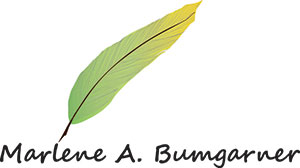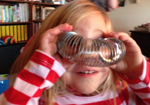Four Year Old Bean was having trouble transitioning from Mommy to Grandma, and after a tearful good bye, three hugs and a kiss, she laid herself out, prostrate, on my front porch, proclaiming loudly “I don’t care about anybody but Mommy!”
Knowing she hadn’t yet had lunch, I put some blueberries and cubes of cheese in a bowl on the coffee table, placed some crayons and a coloring book beside them, and set about preparing some food. As I cut up sandwiches and poured milk, I heard her slowly creeping into the house.
I peeked around the corner. Bean had stopped at the blueberries. She put a few in her mouth, then knelt down and began coloring.
 A few minutes later I set the plate of sandwiches and our drinks on the table, then sat on the floor beside her and began to eat. She was so engrossed in what she was doing, I don’t think she even knew I was there at first, but eventually she handed me a crayon. “Want to color with me, Grandma? It’s really fun.”
A few minutes later I set the plate of sandwiches and our drinks on the table, then sat on the floor beside her and began to eat. She was so engrossed in what she was doing, I don’t think she even knew I was there at first, but eventually she handed me a crayon. “Want to color with me, Grandma? It’s really fun.”
We spent an hour, side by side, coloring in the pictures depicting characters and vehicles from one of her favorite books, discussing which was just the right shade of blue for this and which was the best color for that. Eventually she noticed the sandwiches, and began to eat as she worked.
A miracle? Not exactly. Grandma’s delicious PB&J aside, something happens when we focus on laying down color on a monochromatic image. It’s as if our brain can’t hold on to the stress, or in this case, the anger, and concentrate on coordinating our fingers, hands, eyes, and color sensibilities all at the same time. According to Elena Santos, the practice of coloring “generates wellness, quietness and also stimulates brain areas related to motor skills, the senses and creativity.”
I learned this first hand through a simple homework assignment. Several years ago I signed up for an art methods survey class at the community college where I taught. Thinking I might take up painting after I retired, I bought the requisite brushes, pens, pencils, erasers, notepads and paint, and began rather self-consciously carrying my art box and portfolio across campus twice a week. One of our first assignments was to select a mandala (circular design) from a selection of a dozen or so designs on the front table, and take it home to color. We were instructed to color fifteen minutes a day, then record in our journal how we felt before, during, and after the session. If we finished one mandala in the two weeks allotted for this activity, we were to select another one and begin working on that.
Sharing our experiences at the end of the two weeks, we quickly discovered that many of us had trouble stopping after fifteen minutes, and in fact, several of us completed four, five, even six quite detailed mandalas during the assignment. Our instructor told us he wasn’t surprised; that mandalas were rather special. In Buddhism and Hinduism, the mandala is a spiritual and ritual symbol, often thought to represent the Universe. Mandalas are sometimes thought by psychologists, most especially Carl Jung, to represent the wholeness of the person creating them. However, Professor Rosette concluded, there was also something very significant about the process of coloring in the white spaces, and he encouraged us to explore that further in our lives.
For my final project in the art class I created a mandala that I thought reflected my personality and my spirit. I transferred the image to a circular piece of wood which now sits in my garden, watched over by a friendly gnome. It reminds me to slow down, to focus, to chill out.
The coloring book discovery came just two years ago. Cruising a gift shop the week before Christmas, I bought several copies of The Secret Gardening Coloring Book, touted as a “Coloring Book for Grownups,” thinking they would make unusual gifts for my adult daughters. My son was cruising in the same gift shop, and he bought some note cards designed by the same illustrator, Joanna Basford, and put one of them under the tree for me (affiliate links to both products can be found at the end of this post if you open it in your browser).
For several days after Christmas, with holiday cards to answer, gifts to put away, and dishes to wash, I instead spent hours coloring inside the tiny spaces in the design, free from all the pent-up shopping list and cooking and driving and wrapping craziness of the season. I became lost in the simple act of coloring. Later conversations with my daughters divulged the truth — we all had spent the week after Christmas coloring in our new coloring books. How funny was that? And we all loved it . . . we found that it calmed us, gave us focus, pushed our to-do lists into the background and when they returned we were more able to handle them. Coloring for stress release!
So, recently I started coloring with Bean. We open a coloring book to a two-page spread of blank pictures, then decide who sits on the right and who sits on the left, then we lay out our crayons or colored pencils (never markers, because they bleed through the pages), and settle in for a quiet and companionable time together. As you can see, putting out the coloring book today wasn’t an accidental event; I did it on purpose, to help her put her angry feelings in the background for a while.
They didn’t come back.
Now that there are coloring books for grownups, you might think about keeping some around the house, or in your child care or afterschool center. They work their magic on ten year olds, too!
Share this post




Love your article and so agree. I love to draw and paint also, but sometimes colouring is better because it is less demanding of the creative process.
Eunice,
I don’t know if it happened to you, but when I was raising my own children I was advised against coloring books because they “stifled creativity.” Imagine my surprise when my own artistic daughter told me how much she loved coloring books, the feel and smell of crayons, and the wonderful color names in a set of 64 or 128! Therapeutic as coloring is, I also think it kicks in my interest in contrasting and complementary colors, and it’s fun to try different combinations. You’re so right that it is less demanding of the creative process, but I think it does stimulate it. I’m so pleased to hear that you find coloring (or colouring!) satisfying too.